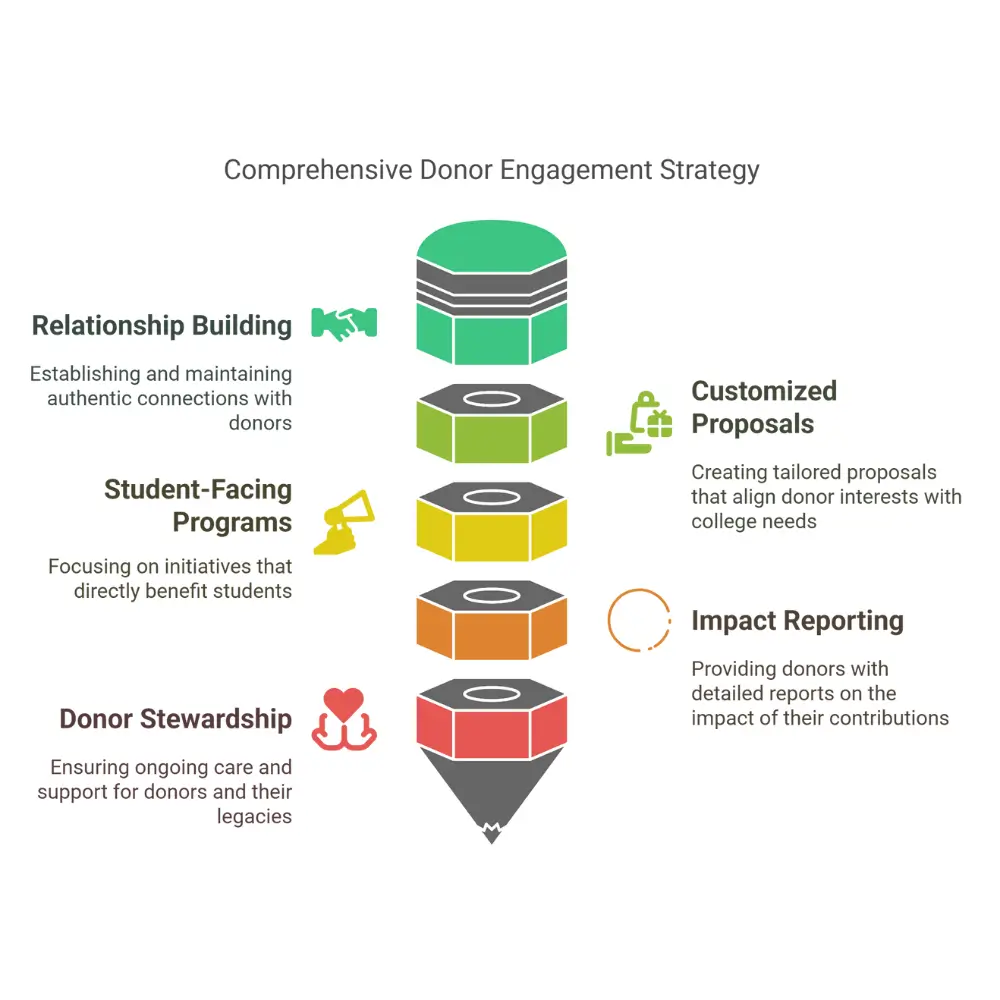Why Fundraising Matters Now More Than Ever
Being a university president is not just about overseeing campus operations. With declining state support in most parts of the country, federal grants in question, and ever-increasing personnel costs, presidents need to bring in extramural money to support their college’s mission. All of this makes fundraising one of the most important parts of most university presidencies.
Given the above, presidents today are expected to raise millions each year. If they don’t, the college risks falling behind. Programs, services, scholarships, and even daily operations depend on this work.
I’ve worked in fundraising for 25 years as a development officer, an associate vice president for advancement, and the senior advancement officer. As I reflect on those roles, I can see how much they prepared me for the Lake Erie College presidency that I now hold.
A Look Back: Hiram College
For sixteen years, I worked in Hiram College’s advancement area. For six of those years, I served as the Vice President of Advancement under President Lori Varlotta. During that time, the two of us partnered closely to bolster the College’s fundraising totals —and keep them growing.
When I arrived, the college brought in less than $4-5 million a year. Together with President Varlotta and a small advancement team, we raised that number to $10-14 million annually. We hit those goals five years in a row, setting records each of those years. One of the many meaningful projects I worked on was raising funds to enhance the college’s central lawn and name it “Varlotta Green” in the president’s honor. It wasn’t just about the money—it was about recognizing the positive changes President Varlotta made to the College that both of us loved so much.

What Made Our Fundraising Work
In terms of our fundraising programs, President Varlotta and I did many things right. Of key importance was the authentic relationships we built and maintained with our donors. We spent time getting to know each one of them on a deeply personal basis. We listened to their life stories, learned what they cared about, connected their interests to college needs, presented them with highly-personalized proposals, showed genuine gratitude for the gifts they made, and stayed in touch long after the contribution came through.
There was nothing transactional about our approach. Each time we made an official request, it was presented to the donors via a highly customized proposal that directly captured interests they had shared with us in previous conversations. The custom proposals tied every dollar to a college priority or the strategic plan so that donors felt connected to a broader initiative. This helped donors see and support the bigger picture.
Most of our asks were for student-facing gifts. These included scholarships, academic support, and services that made college better for students. Donors were thrilled to see their contributions directly impact the most important members of the college community: the students.
After the Gift: Keeping the Relationship Strong
When a donor gave, we followed up. We didn’t just send a thank-you note. We called them regularly, visited them on holidays, and provided routine reports on where the money went and what it accomplished.
This kind of follow-up builds trust. It also makes donors want to give again. It shows you respect them as co-creators of the culture, are grateful for the gift, and feel a responsibility for the outcome.
We stewarded our relationships because we genuinely valued our donors. We knew these donors were essential not only to Hiram’s ongoing financial sustainability but for the sustainability of the College mission and ethos. Our donors were deeply touched to be a part of it all, and we loved helping them get and stay involved.
A Smart Pivot at California Lutheran University
Sometimes, fundraising kicks a president’s people skills and critical thinking skills into high gear. Such was the case at California Lutheran University when President Varlotta faced a major test in her first weeks at the university. There, a donor had pledged a large gift to build a School of Business. But after delays and pandemic-related setbacks, the original plan couldn’t move forward.
Instead of letting the gift fall through, President Varlotta proposed a philanthropic pivot: reallocate the gift to a new project in creation of the Steven Dorfman Center for Innovation and Entrepreneurship.
That shift kept the donor engaged and led to something powerful. The new center now supports students, faculty, and the local community through training, mentorship, and business incubation.
What This Means for College Leaders
If you’re leading a college, you need to lead its fundraising efforts as well. You can’t pass it off or treat it like a peripheral responsibility. Your role matters in every part of the process.
This means building trust with donors and working closely with your advancement team. It also means understanding what people want their hard-earned money to do—and helping them see that impact clearly.
Fundraising isn’t just a responsibility. It’s a relationship. When you show up, follow through, and stay connected, your college benefits—and so do the people who support it.
Jennifer Schuller
President, Lake Erie College


